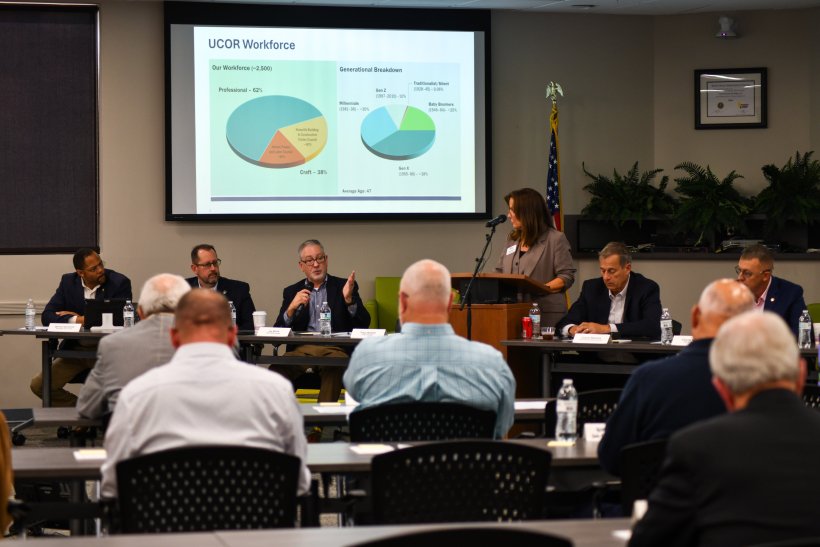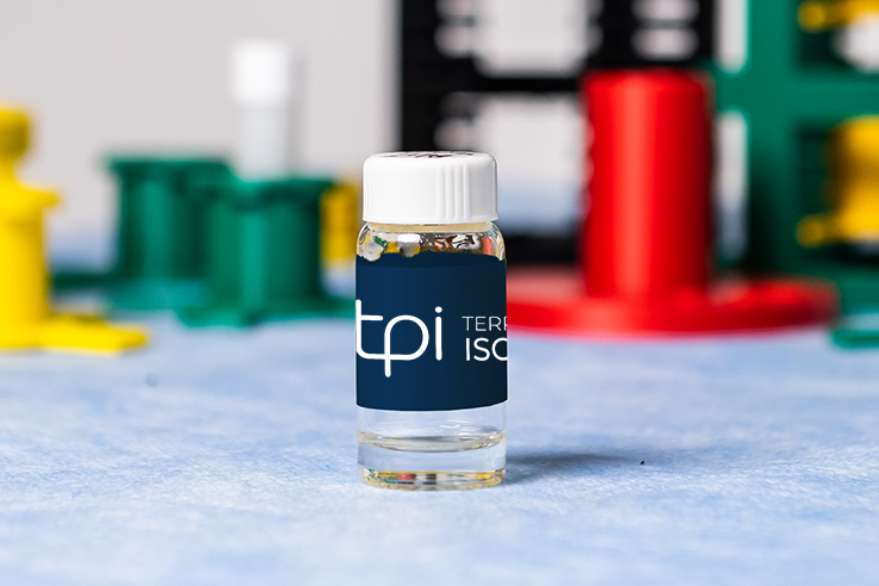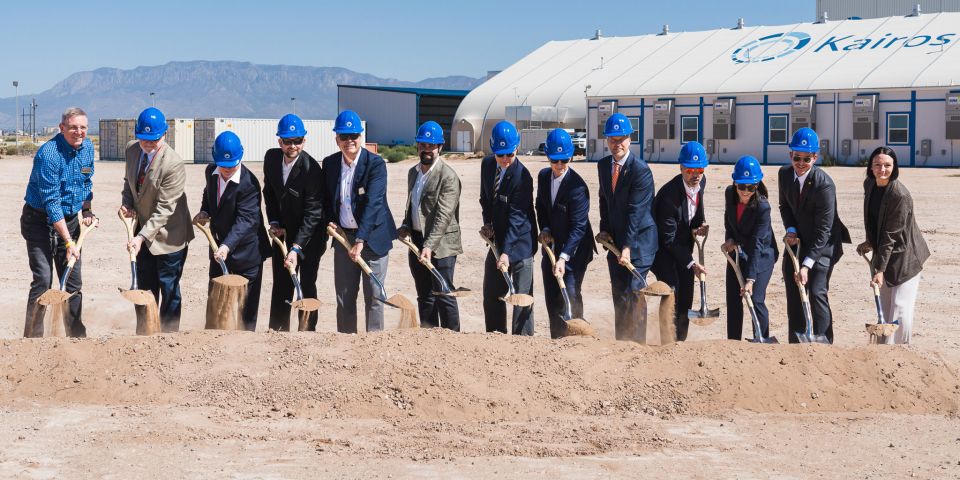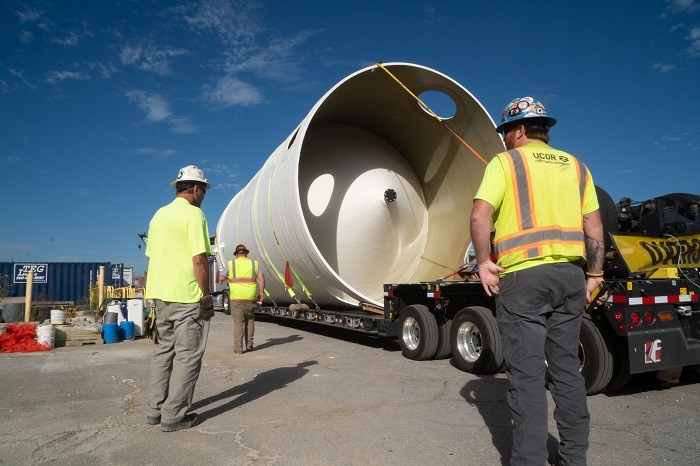Proof of concept: The Molten Salt Reactor Experiment in Nuclear News
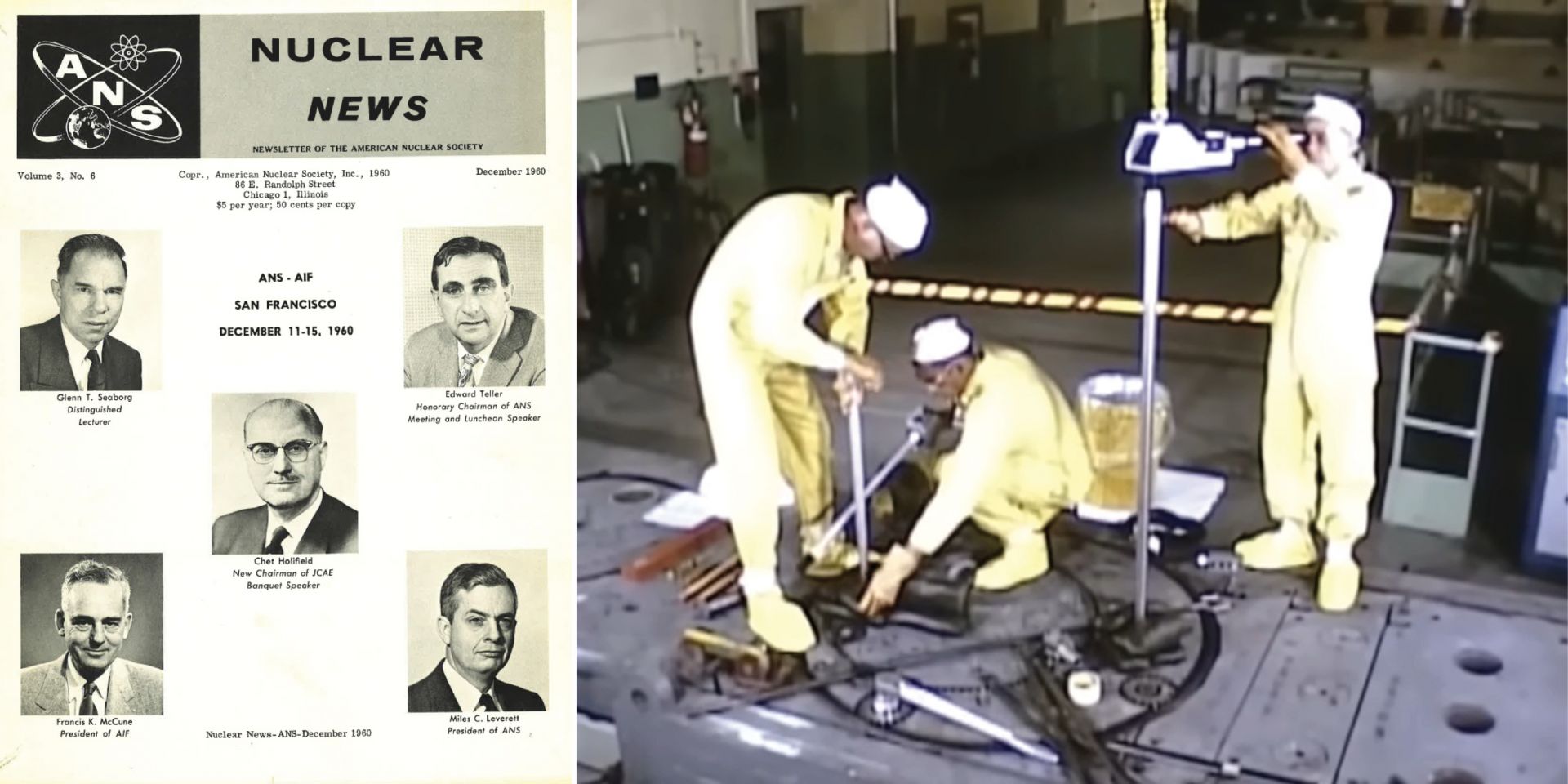
By late 1960, when the U.S. Atomic Energy Commission authorized plans to build a Molten Salt Reactor Experiment (MSRE) at Oak Ridge National Laboratory, the lab already had about 13 years of experimentation with molten salt reactors under its longest-serving lab director, Alvin Weinberg. The MSRE operated from 1965 to 1969, proving that molten salt reactors could operate reliably, and with alternatives to uranium-235 too.
Nearly 65 years later, molten salt reactors—at least experimental- and demo-scale MSRs—are back. Four reactor developers have either submitted applications for MSRs or are in preapplication discussions with the Nuclear Regulatory Commission (other designs are in the works as well): Kairos Power is pursuing a fluoride salt–cooled pebble bed reactor and has a construction permit to build Hermes (a nonpower 35-MWt demo reactor—the first advanced reactor construction approval from the NRC) near ORNL. Abilene Christian University’s NEXT Lab is building a 1-MWt graphite-moderated, molten fluoride salt–cooled research reactor in partnership with Natura Resources. Terrestrial Energy USA, developer of the Integral Molten Salt Reactor, a 195-MWe fluoride salt–cooled thermal spectrum reactor, is in preapplication discussions with the NRC. Only one of the four—the Molten Chloride Reactor Experiment (MCRE) planned at Idaho National Laboratory by TerraPower, Southern Nuclear, and partners to demonstrate the feasibility of a utility-scale molten chloride fast reactor—would use a chloride salt as a liquid fuel carrier.
Plans to follow the MSRE with commercial-scale molten salt breeder reactors—tempting in their fuel economy and versatility—received inconsistent support in the 1970s, as liquid-metal fast breeder reactors pulled ahead before President Jimmy Carter decreed a shift away from breeders in 1977. But it’s not overstating to say that every MSR planned today is predicated at least in part on the proof-of-concept delivered by the MSRE. In this Throwback Thursday, we look at the MSRE as it was described in the pages of Nuclear News in the 1960s and 1970s.
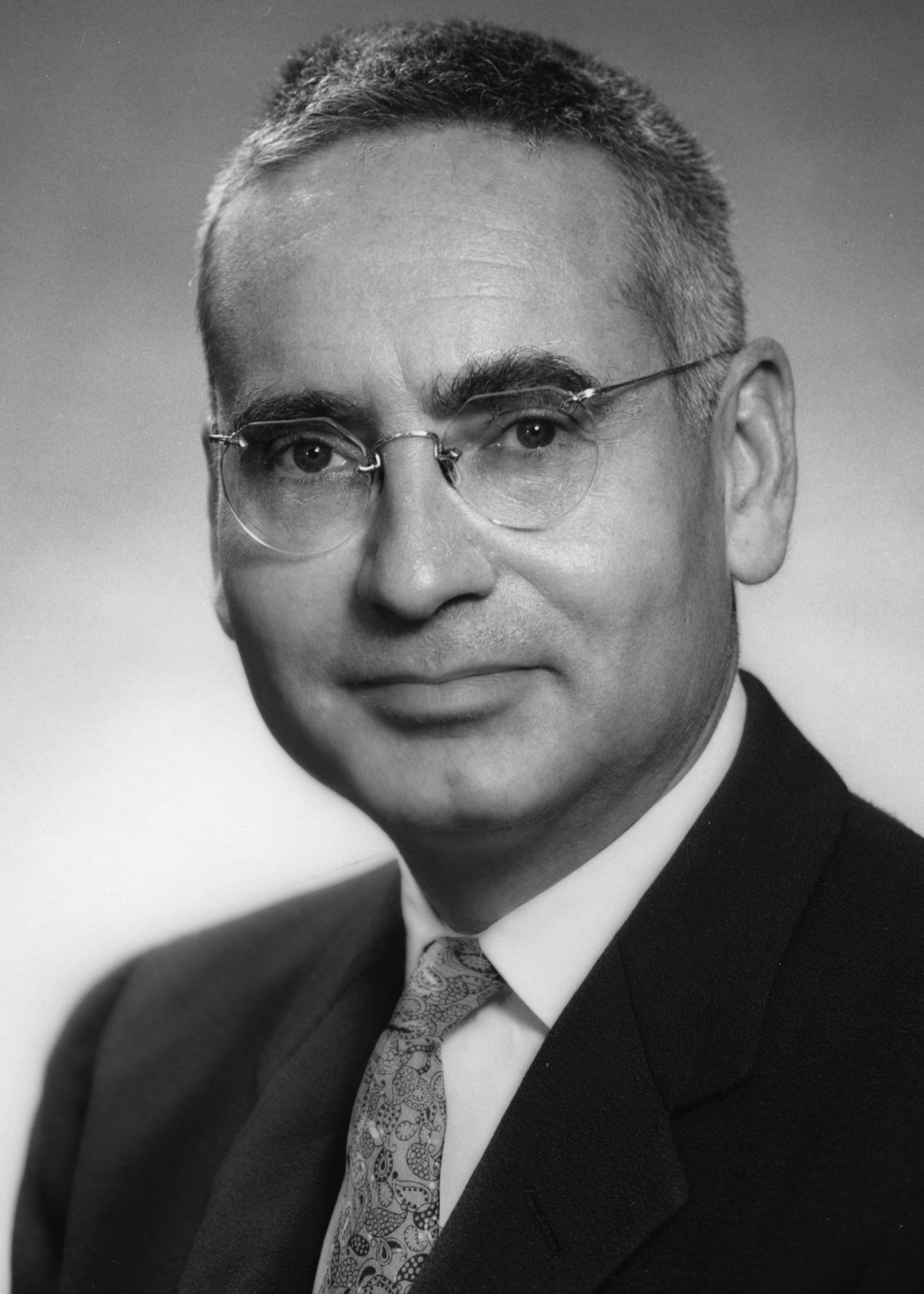
Alvin M. Weinberg (Photo: ORNL)
ANS president: Alvin M. Weinberg served as ANS’s fifth president in 1959–1960. And when he had the opportunity to address an assembly of ANS members, he often spoke about the molten salt experiments he was involved in at Oak Ridge. In June 1960, Weinberg delivered the first formal farewell address by an ANS president: “Some Aspects of Fluid Fuel Reactor Development.” He reviewed “those aspects of fluid fuel reactor development with which he has been closely associated during the past 13 years at ORNL” and discussed “mainly the aqueous-homogeneous and molten-salt systems with which he has been directly connected.” The full text of Weinberg’s farewell speech to ANS members was reproduced in ANS’s Nuclear Science and Engineering journal.
MSRE is a go: In October 1960, the Atomic Energy Commission gave the go-ahead for the MSRE to be built in an existing building previously used for the Aircraft Reactor Experiment. NN reported the plans in the December 1960 issue:
The AEC will build a reactor experiment of the molten salt type at ORNL as a part of the Commission's effort to investigate advanced reactor concepts having potential advantages for production of electrical power. . . .
The major objectives of the reactor experiment are to demonstrate the dependability, serviceability, and safety of the molten salt reactor concept for civilian power purposes, providing confirmation of earlier experimental work and information on components needed for a large reactor. . . .
The reactor experiment is being designed as a 10,000 thermal kilowatt reactor although routine operation will be at about 5,000 kilowatts. No electrical power will be produced. Instead, the heat will be dumped to the atmosphere through a secondary heat exchanger. . . .
The reactor experiment is planned as a single region reactor for operation at 1,225° Fahrenheit. It will have a cylindrical graphite core about 4 ½ feet in diameter and 5 ½ feet high. Columns of graphite will extend the full height of the core. The molten salt fuel, a solution of fluorides of lithium-7, beryllium, uranium, zirconium, and thorium, will be pumped through some 600 channels in the graphite columns. The heat will be removed from the fuel solution in a primary heat exchanger that will use a mixture of lithium and beryllium fluorides as the coolant.
Costs of the experiment are estimated at about $4,100,000, exclusive of research and development. Construction completion is scheduled for late 1962 and operation is planned for the spring of 1963.
MSRE and HFIR in lockstep: It wasn’t until June 1, 1965, that the MSRE began operating, just two months before the High Flux Isotope Reactor also began operating at ORNL. NN reported in March 1966:
The U.S. reactor program took an important step forward at the end of January 1966 when the MSRE and the HFIR begin to operate at significant power levels almost simultaneously. The Molten Salt Reactor Experiment and the High Flux Isotope Reactor had been under construction for five years, and had achieved initial criticality in mid-1965. The intervening time has been used to prepare the reactors for operation at high power.
The MSRE is the final step in an attempt to achieve power breeding in the thorium system. MSRE reached a level of 1 MW on January 25, and is expected to achieve the design power level at 10 MW during March.
“The world’s first U-233 reactor”: By May 1968, when NN reported on a planned outage at the MSRE for refueling with U-233, appreciative enthusiasm for the experiment’s reliability—and the potential for molten salt breeder reactors of the future—was evident.
Oak Ridge National Laboratory’s Molten Salt Reactor Experiment was shut down March 26, ending a six-month period of operation. When the reactor resumes operation in July, it will be fueled with uranium-233, the isotope that will be produced eventually in the breeder reactors for which MSRE is a forerunner. This will make the MSRE the world's first U-233 reactor.
During the run just completed the molten fuel was in the core continuously for 188 days, and the reactor was actually producing nuclear power 98 percent of the time. This long run underscored the reliability attained in the MSRE, demonstrated in 1967 when the reactor was available for experimental purposes 82 percent of the year and was critical for 74 percent of the time. . . .
ORNL claims the MSRE experience has demonstrated that a molten salt reactor can operate successfully at high temperatures without significant corrosive attack on either the metal or the graphite parts of the system, that reactor equipment can operate satisfactorily under these conditions, and that radioactive parts of the system can be repaired or replaced.
Seaborg at the controls: By November 1968, NN could report that “the Molten Salt Reactor Experiment at the Oak Ridge National Laboratory has become the world's first reactor to operate on U-233. Fueling began in September and involved the gradual addition of U-233 until the design loading of 33 kg was reached. The reactor achieved a self-sustained chain reaction on October 2 and was brought to power (100 kWt) on October 8, when AEC Chairman Glenn Seaborg (a co-discoverer of U-233) threw the switch in the control room. The experimental reactor will be brought to its full power (8000 kWt) at a later date.”
To mark the occasion, Seaborg gave a speech. According to NN, “Chairman Seaborg praised the reactor’s concept and predicted the world would one day see commercial power reactors utilizing the thorium-uranium cycle. Despite these glowing words of praise, AEC watchers see no indication of any shift from the top U.S. priority on the LMFBR [liquid metal fast breeder reactor] concept.”
Another hint that proponents of molten salt breeder reactors were seeing themselves in a competition with LMFBRs for federal support was apparent later in the same issue, in a report from the Northeastern New York ANS Local Section on a dinner meeting that featured Weinberg as guest speaker. His topic? “Reactors Without Fuel Assemblies.”
According to the report:
Dr. Weinberg discussed the molten salt breeder reactor concept of which he has been the leading exponent and which is being developed at ORNL. In the MSR the fuels are fluoride salts, and criticality occurs when the molten salts flow through passages in the graphite blocks that form the core. . . . Because the MSR’s fuel is in a liquid state, Dr. Weinberg said, it can readily be diverted and reprocessed on site, thus requiring a much smaller fuel inventory tied up in reprocessing than other breeder types require, and, in terms of total fuel inventory, the MSR is competitive with fast breeder systems.

Then AEC chair Glenn Seaborg operates the controls of the MSRE—running on U-233 fuel—on October 8, 1968. (Photo: ORNL)
Review and future: In June 1970, NN reported that “the molten salt reactor experiment’s goals had been met when nuclear operation of the MSRE ended with a planned shutdown, for budget reasons, on December 12, 1969. The reactor was running well, and operation was still producing useful information.”
In September 1974, when the article “MSBR: a review of its status and future” by L. E. McNeese and M. W. Rosenthal was published, MSRs were once again under development at ORNL:
In February 1973, the U.S. Atomic Energy Commission development program for molten salt reactors was terminated for budgetary reasons, and efforts to develop molten salt breeder reactors seemed likely to come to an end. However, the outlook for MSBR’s brightened recently when the AEC program was reinstated at the beginning of this year and work has resumed at Oak Ridge National Laboratory. . . .
The 7.4-MWt MSRE became critical at Oak Ridge in 1965 and, after a very successful operating history, was shut down in late 1969 after circulating fuel salt at around 1,200°F for a total of two and a half years.
The MSRE experience was of major importance to the molten salt concept. Although the usual startup problems were encountered, sustained power operation provided a remarkable demonstration of operability. Starting in late 1966, an uninterrupted one-month run was made, then a three-month run, and finally a six-month run. Next, by means of a small fluoride volatility plant connected to the reactor, the original, partially enriched U-235 fuel was removed from the salt and replaced by U-233. The MSRE then operated the final year on U-233, which makes it the only reactor to have operated on this fuel; for a period, plutonium was used as the make-up fuel.”





